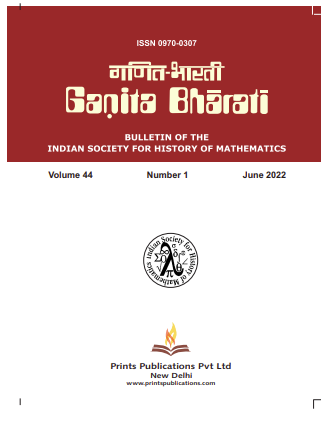Ganita Bharati
Published in Association with Bulletin of The Indian Society for History of Mathematics
Current Volume: 45 (2023 )
ISSN: 0970-0307
Periodicity: Half-Yearly
Month(s) of Publication: June & December
Subject: Mathematics
DOI: https://doi.org/10.32381/GB
Online Access is Free for Life Member
On the History of Nested Intervals: From Archimedes to Cantor
By : G. I. Sinkevich
Page No: 23-45
Abstract
The idea of the principle of nested intervals, or the concept of convergent sequences which is equivalent to this idea, dates back to the ancient world. Archimedes calculated the unknown in excess and deficiency, approximating with two sets of values: ambient and nested values. J. Buridan came up with a concept of a point lying within a sequence of nested intervals. P. Fermat, D. Gregory, I. Newton, C. MacLaurin, C. Gauss, and J.-B. Fourier used to search for an unknown value with the help of approximation in excess and deficiency. In the 19th century, in the works of B. Bolzano, A.-L. Cauchy, J.P.G. Lejeune Dirichlet, K. Weierstrass, and G. Cantor, this logical construction turned into the analysis argumentation method. The concept of a real number was elaborated in the 1870s in works of Ch. Méray, Weierstrass, H.E. Heine, Cantor, and R. Dedekind. Cantor’s elaboration was based on the notion of a limiting point and principle of nested intervals. What discuss here the development of the idea starting from the ancient times.




